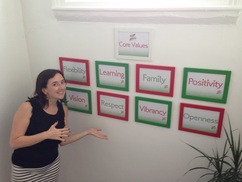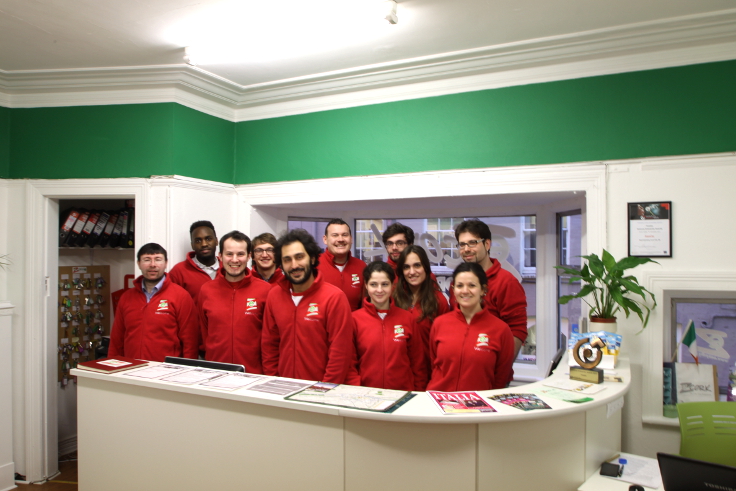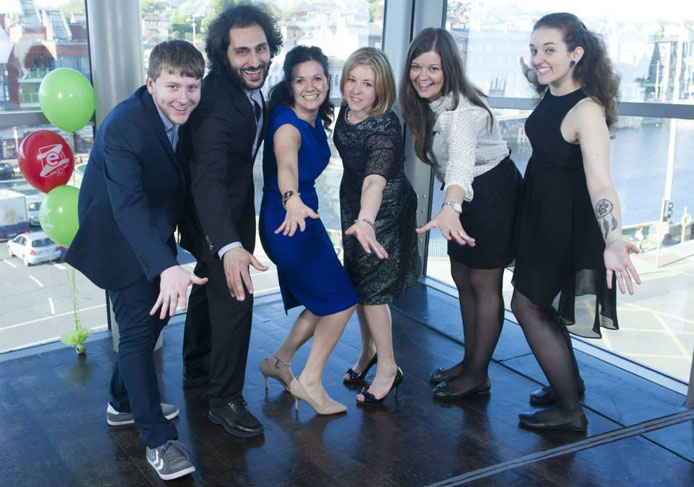In business, it is critically important to understand why your customer is buying your product or service. It is very often not for the product or service itself, but for the experience or utility that your specific product or service will deliver them afterwards.
I am reminded of this story because I went to meet with EazyCity recently and expected to learn about how they provide accommodation and language training services to their clients but instead ended up learning about how the staff at EazyCity are passionate about helping people change their lives!!
And of course, it makes perfect sense. Young people don't travel to a new city for the accommodation, or even for the language. They can learn that online from home. They travel to new cities because they are looking to change or improve their lives in some way. The accommodation, the language training, the translation services, even the job finding services, they are all the drills. The life changing experience, now that is the "Hole"!
EazyCity are a tremendous success story on so many fronts. They started in Cork 10 years ago and today they have offices in Cork, Dublin and London and are in the process of moving into the US. Their workforce is young, dynamic, passionate, dedicated and above all flexible. And, as I witnessed first hand when doing a team workshop with them recently, they are happy!
So what is their secret?
Well I think the first thing is that the owners, Julia and Enrico, understand and care about what their customers are looking for. They have traveled to other countries themselves and they understand what is driving the young traveler these days and they are passionate about looking after them and helping them fulfill their dreams. Ask any of the staff and they will tell you they are "welcoming service" and they are there to help their clients in whatever way they can. Julia herself says that the day will never come when a client is left to fend for themselves because of something like a delayed flight. They will always be there to welcome the client into our cities no matter what time of the day or night they end up arriving.
The second part of their secret is the staff they recruit. As Julia puts it, they are looking more for attitude than skills. The important qualities are commitment to the job and flexibility. They work long hours and they are available to their clients 7 days a week. If someone is going to be resentful that they are missing a social engagement because the client they are welcoming has a delayed flight, then they are not the right person for the job.
That may seem like a tall ask – yet they have pulled it off. All of the staff that I interviewed spoke about wanting to do all that they can to help their clients and solve their problems and even referred to the role they were playing in helping improve their clients' lives. The key attitude they say they bring to work with them every day was positivity.
The third part of their secret is the culture of the organisation. This is something that EazyCity's owners, Julia and Enrico, pay a lot of attention to. They have identified their 8 core values, which can be seen displayed in their stairway.
 EazyCity's Core Values
EazyCity's Core Values Vibrancy
Openness
Respect
Family
Vision
Flexibility
Learning
Positivity
| All the staff spoke about the Family feel of the company and how it was so important to them to keep this. They socialise together regularly and Julia places a big emphasis on arranging fun events for all the staff to let their hair down together. They know about each other's families and what is going on in each other's lives and they want to preserve this, no matter how big the company grows. Each member of staff has a development plan and the fact that many of the managers there today started as interns originally shows that this is a company where Learning is available and happening all the time. When asked to describe the leadership style of the organisation, the word "Openness" was used time and again. There is openness to new ideas, to raising issues and to experimenting and trying new things. |
| And Vision – Julia spoke about how important it is to constantly share the vision for the future with all of the staff so that they can feel excited and part of it. When I asked the staff about where they would like to see EazyCity in the future, they all shared the same answer – franschised in many cities across the world, with the same quality of service and the same family feel. But the thing about Vision that I loved most came from Barbara, operations manager for their three offices. She said that working in EazyCity has thought her to "think big", something she had never done before! |
How about you reader? Have you managed to understand the real driver behind why your customer wants or needs what you are selling? Do your staff understand it? Does your company's culture support it? To learn about how you can get your organisation totally aligned with your customers real needs, drop me line at [email protected].
To learn more about EazyCity check out www.eazycity.com












 RSS Feed
RSS Feed